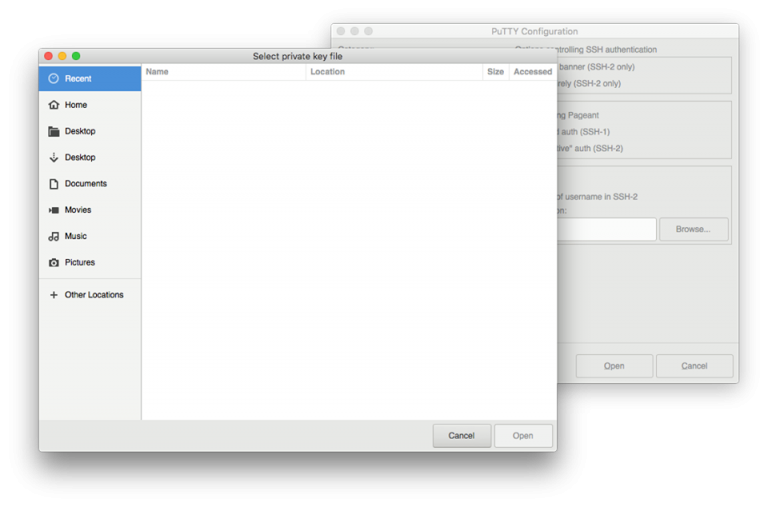

- #Putty for mac os mojave how to
- #Putty for mac os mojave serial
- #Putty for mac os mojave full
- #Putty for mac os mojave pro
Don’t forget: Your desktop Mac has a hard or solid-state drive inside it, too. Never bump, drop, shake, wobble, dribble, drop-kick, or play catch with a hard drive while it’s running Mojave.Just use the Shut Down command, and you’ll sleep well. The only caveat is that if your battery is totally depleted, damaged, or missing entirely, you could suffer directory damage or data loss by pulling the plug. After pressing Enter, the Mac will now open a console connection to the device, and if the baudrate is set correctly (it must match or else the bits will not flow properly) a connection will be opened, and you’ll be greeted with the CLI of the device you’re about to configure.If you’re using a laptop, you can usually get away with pulling the plug while it’s running because the battery automatically kicks in. Screen “USB_MODEM_STRING” “BAUDRATE_THE_DEVICE_COMMUNICATES_AT”Įxample using the string in the previous section and a baudrate of 9600:Ģ. Launch Terminal, and enter the following command:

#Putty for mac os mojave how to
Typically, it is something like “/dev/tty.usbmodem1234567.” How to establish a console connectionġ.
#Putty for mac os mojave full
The Terminal will respond with the full string that identifies the USB modem connection that you will use to console into the device in the following section. Launch Terminal, and enter the following command:ģ. Connect one end of the USB cable to your Mac computer and the other to the device you wish to console into.Ģ. How to identify the communications portġ.
#Putty for mac os mojave serial
Some modern devices have moved away from serial connections to micro-USB, while others feature a full-size USB port, so make sure you have the right cable for the job before beginning. The only caveat is the connector type on the device to be configured. Note: Since Macs do not have serial connections built-in, a USB cable will work just fine. This allows users to interface with devices that support console connections, like the managed network switch, in this case, to gain access to its internal OS and configure it-just as one would with a serial cable and commonly used software, such as Putty. Luckily, with a USB to micro-USB cable in hand, macOS includes the native Screen command that allows for tunneling consoled communications over USB. SEE: Apple macOS Mojave: An insider’s guide (free PDF) (TechRepublic) Having only their trusty MacBook Air handy, they did not have access to the software typically used to configure devices and their laptop did not have the legacy serial port needed.


Recently my colleague, a Mac systems administrator looking to gain more hands-on experience in network administration, was tasked with configuring several switches that were to be installed in production offices. Being multifaceted among job roles and proficient with different OSes is increasingly essential to modern IT pros being able to accomplish tasks across multiple platforms, sometimes at the drop of a hat. To complicate matters further is the influx of heterogeneous networks-populated with all matter of Apple, Linux, and Microsoft devices. With every organization being its own entity with unique needs, sometimes these roles will cross-pollinate, and IT pros will find themselves wearing many hats. In IT, many positions are compartmentalized based on the primary role’s responsibilities. ICloud Usage Policy (TechRepublic Premium) Save more than $1,000 off a refurbished MacBook Air
#Putty for mac os mojave pro
How to change Touch ID settings on a MacBook Pro Image: Suwat Rujimethakul, Getty Images/iStockphoto Must-read Apple coverageĪpple debuts new and enhanced watches, iPhones and AirPods Using tools built into macOS, administrators can console into network and computing devices via USB to establish a connection, as well as configure these devices using the Screen command. How to simplify configuring devices via console on macOS


 0 kommentar(er)
0 kommentar(er)
